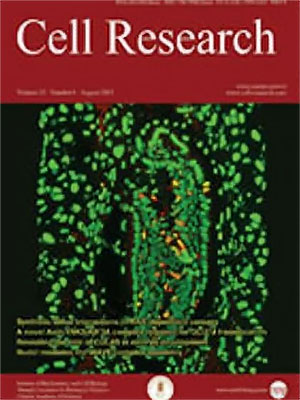
Volume 15, No 4, Apr 2005
ISSN: 1001-0602
EISSN: 1748-7838 2018
impact factor 17.848*
(Clarivate Analytics, 2019)
Volume 15 Issue 4, April 2005: 281-291
REVIEWS
Tudor and its domains: germ cell formation from a Tudor perspective
Travis Thomson, Paul Lasko*
Department of Biology, McGill University, Montreal, Quebec, Canada H3A 1B1
Correspondence: Paul Lasko(paul.lasko@mcgill.ca)
In many metazoan species, germ cell formation requires the germ plasm, a specialized cytoplasm which often contains electron dense structures. Genes required for germ cell formation in Drosophila have been isolated predominantly in screens for maternal-effect mutations. One such gene is tudor (tud); without proper tud function germ cell formation does not occur. Unlike other genes involved in Drosophila germ cell specification tud is dispensable for other somatic functions such as abdominal patterning. It is not known how TUD contributes at a molecular level to germ cell formation but in tud mutants, polar granule formation is severely compromised, and mitochondrially encoded ribosomal RNAs do not localize to the polar granule. TUD is composed of 11 repeats of the protein motif called the Tudor domain. There are similar proteins to TUD in the germ line of other metazoan species including mice. Probable vertebrate orthologues of Drosophila genes involved in germ cell specification will be discussed.
FULL TEXT | PDF
Browse 2042


